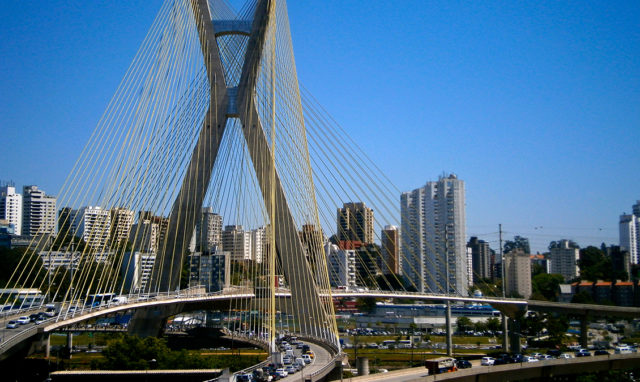Before Falling Further Behind, Cities Must Take a New Look at Infrastructure Financing
May 5, 2016 — Blog
For all of the stress we exert on our old and overstretched city infrastructure, these structures that carry us through our day-to-day lives manage to throw a lot of stress back at us. In cities around the world, urban populations are growing fast — in many cases too fast for our already overstretched infrastructure to bear.
From New York to Jakarta, we are trapped in our cars in interminable traffic jams. From Chennai to Lagos, we are never quite sure if we can access the electricity we need today, let alone tomorrow. From Tokyo to Paris, we are packed like sardines in underground metro systems, testing the limits of their capacities. And, more recently, we have been worried about drinking lead contaminated water from aging water mains (some dating well before the Civil War) in Flint, Newark, and who-knows-what other older cities in the United States. Throw in an affordable housing crisis, neglected and aging infrastructure, and roughly one million people moving to cities each week globally – and the urgency of today’s situation becomes quite clear.

Cities are already the place most of us call home. They are the driving force behind economic growth and development around the world. In the next 10 years, according to the McKinsey Global Institute, the world’s top 600 cities will generate 60 percent of global GDP (an unfathomable USD $30 trillion). Among them, 440 of these cities — the so-called Emerging 440 — are mid-sized cities from the developing world that are expanding rapidly. Although the lure of better access to jobs, education, healthcare, and other amenities exists, the reality of urban living is often challenging. City governments’ are overwhelmed with the task of providing adequate infrastructure services — roads, public transit, clean water, waste management, electricity, telecommunications, public schools, affordable housing — to the meet the rising tide of urban migrants.
What these cities need most is not another major policy paper, but a clear ‘how-to’ guide for understanding new state-of-the-ar
t financing tools and instruments in their proper context.
Megacities receive the bulk of investment and small cities benefit from grants and aid from the international financial community. Yet though middleweight emerging cities will drive growth, most of them have limited financial savvy and will face major challenges when it comes to creditworthiness, capacity building, and bankable infrastructure projects. What these cities need most is not another major policy paper, but a clear ‘how-to’ guide for understanding new state-of-the-art financing tools and instruments in their proper context. From crowd-funding and mini bonds for user-investor civic projects, to Local Government Funding Agencies, and vehicles for upgrading borrowing capacities and leveraging the capital market, there are myriad tools available today. Ensuring these new tools are accessible among the leaders of theEmerging 440 will help ensure public dollars are dedicated to sustainable and innovative infrastructure projects.
Today’s cities have no choice but to discover new and creative ways of financing the infrastructure we desperately need, if our predicted urban growth is to become a sustainable reality. Instead of relying on national governments and development grants — in other words, subsidies and transfers that are unsustainable in the long run — cities need to become more financially savvy. Because cities are where the rubber (quite literally) meets the road, they have the opportunity to be at the forefront — engaging their citizens and investors alike, devising creative and innovative solutions on their own, designing projects that are bankable, and marketing them globally. We are already almost two decades into the ‘Century of Cities’; it is time for cities to assert themselves.
Every dollar invested in infrastructure increases economic output by at least twofold.
Every dollar invested in infrastructure increases economic output by at least twofold. Nonetheless, we face a global infrastructure funding crisis. Globally, we need USD $4.5 trillion (three-quarters being for urban areas), meanwhile, only $1.5 trillion appears on balance sheets. The annual spending gap of $3 trillion, increasingly, leaves cities “holding the bag”.
The investment community looking to finance infrastructure projects, and the public sector that oversees their provision, look at infrastructure in very different ways. This disconnect in the conversation has led to a two-part problem: a misunderstanding of where the money will come from, and a multitude of projects that lack clear revenue sources to pay back upfront financing. Especially considering the Emerging 440, it is more important than ever to reconcile this misunderstanding.
In the end, financing has to be repaid one way or another. Nothing is free. In order for funding to be sustainable, the buck ultimately stops with taxpayers and users — you, me, and the communities, businesses, and industries that make up our cities. Finding ways to provide the needed infrastructure is not just about financing. It is about ensuring that our future generations inherit cities built on strong foundations. It is about our collaborative effort to create a better alternative to the status quo—that is, building advanced infrastructure that is robust, financially sustainable and, most importantly, will withstand the environmental and social challenges in the years ahead.